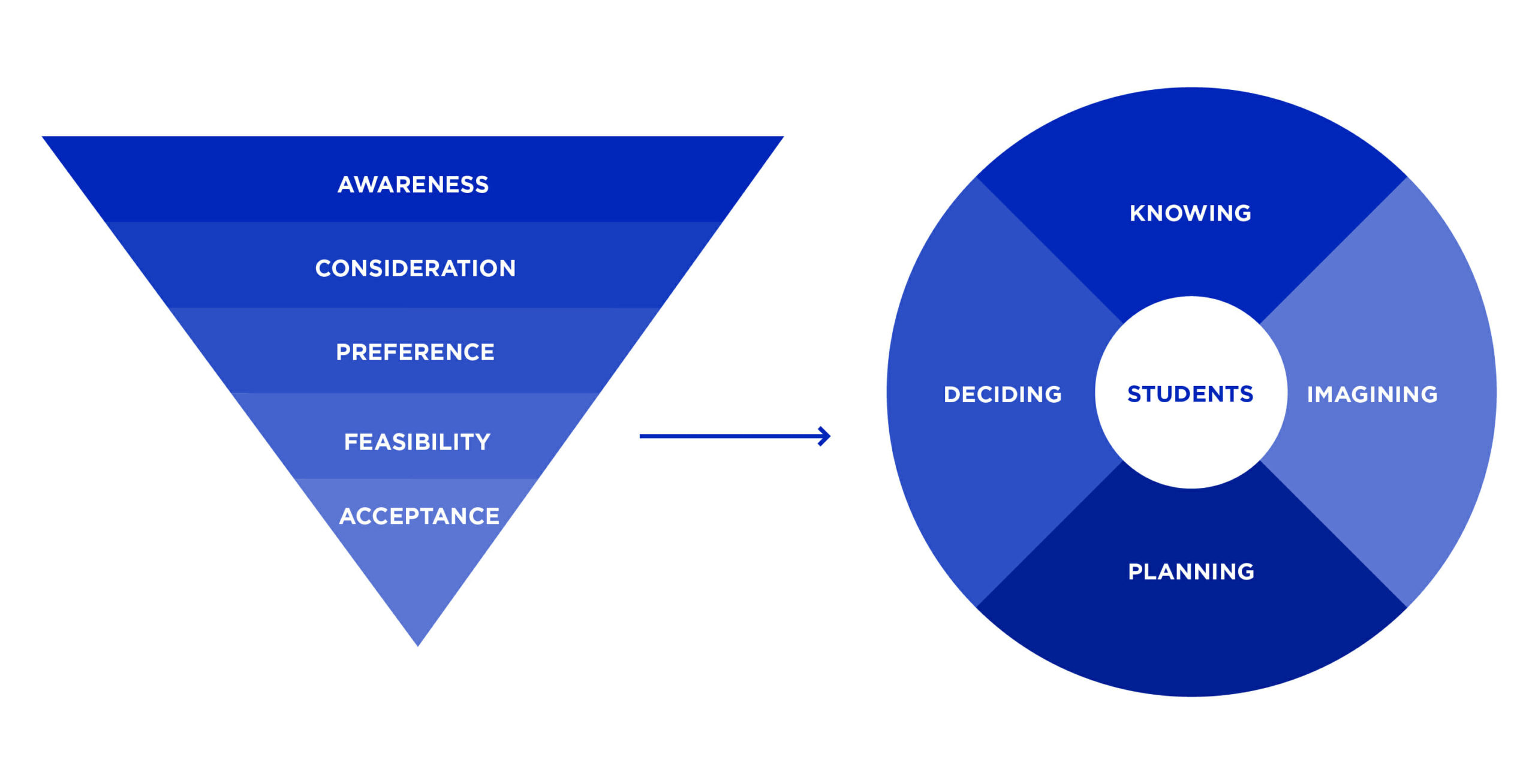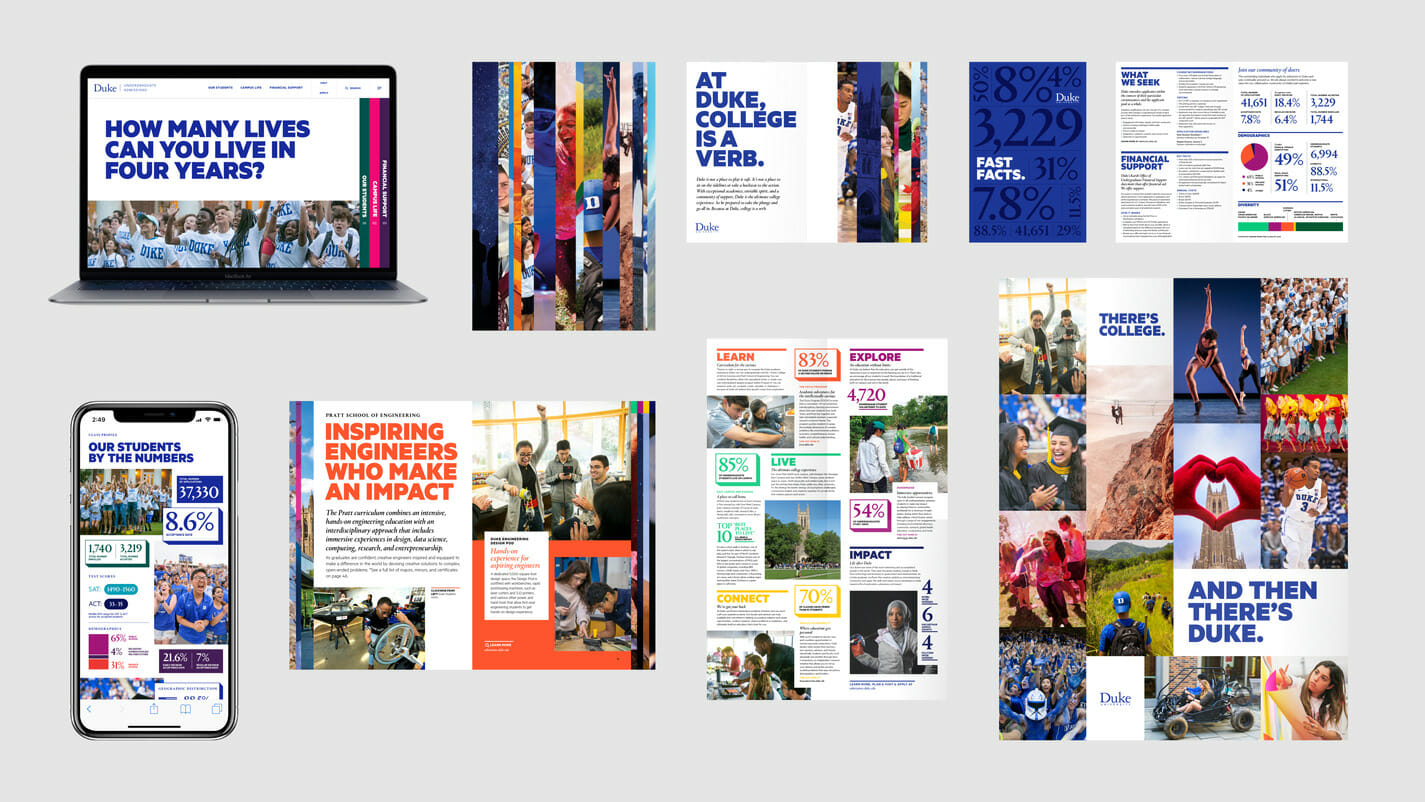Recruiting the Right People
Becoming the first choice for the people you want — lessons from a reimagined Duke admissions experience
Identifying and recruiting the right people for your organization is a complex process no matter what sector you’re in. Higher ed is no exception. As colleges across the country compete for the attention and mindshare of young audiences, their communications often sound hum-drummingly similar. Like many potential employees, high school students are inundated with options whose overlapping messages leave them thinking: ‘Why do I care?’
Across our partnership with Duke University this year, we reimagined their admissions experience. We unearthed three lessons that can help any school or employer reach their target audience.
Get inside your audience’s head
Communications are only effective when you know who’s on the receiving end. To understand Duke’s prospective students, we led a process to learn what they might be feeling and thinking throughout the college application process. Our biggest takeaway: their journey isn’t linear. We found that prospective students cycle in and out of various mindsets. They try to understand if there are students at Duke like them (a mindset we call “Knowing”); envision what life in Durham would be like (“Imagining”); assess if attending would be financially feasible (“Planning”); and determine if Duke is really the right choice for them (“Deciding”). The traditional marketing funnel below is valuable for understanding audience journeys and mapping out communications plans around them. But don’t be afraid to step away from the funnel in favor of a less linear, mindset-driven map with your audience at the center.

Stand out from the crowd
Too many higher-ed institutions are saying the same things and espousing similar virtues. You’d be hard-pressed to find a school that doesn’t promote their excellent academics, commitment to diversity, and intimate student-to-faculty ratio. It’s not that those characteristics aren’t important; it’s that they’re table-stakes.
To stand out in a sea of sameness, you have to separate what’s expected from what makes you distinct. You can do this by thinking less about what you want to say and more about what your target audience wants to hear.
For Duke, this meant elevating attributes they had been underselling. We began to emphasize the first year student experience on East Campus, opportunities for community engagement within Durham, and Duke’s supportive resources from peer advisors to faculty mentors, to a robust health and wellness center. Below is a before and after video that captures the transformation of Duke’s Undergraduate Admissions website from institutional-leaning to student-centric.
Be consistent, not boring
From a brand perspective, consistency is crucial. Messages don’t immediately sink in — your audience has to hear them over and over again before they stick. But being consistent doesn’t mean copying and pasting the same verbiage and visuals from one touch point to the next. Instead, you can choreograph content and design across your communications. We did this by varying headlines and making bold design choices to bring prospective students into Duke’s lively community without having to be on-campus.

The bottom line
At the heart of it all is a simple piece of advice: it’s less about you and more about your audience. The closer you are to understanding what they want, the likelier you are to be their first choice.


